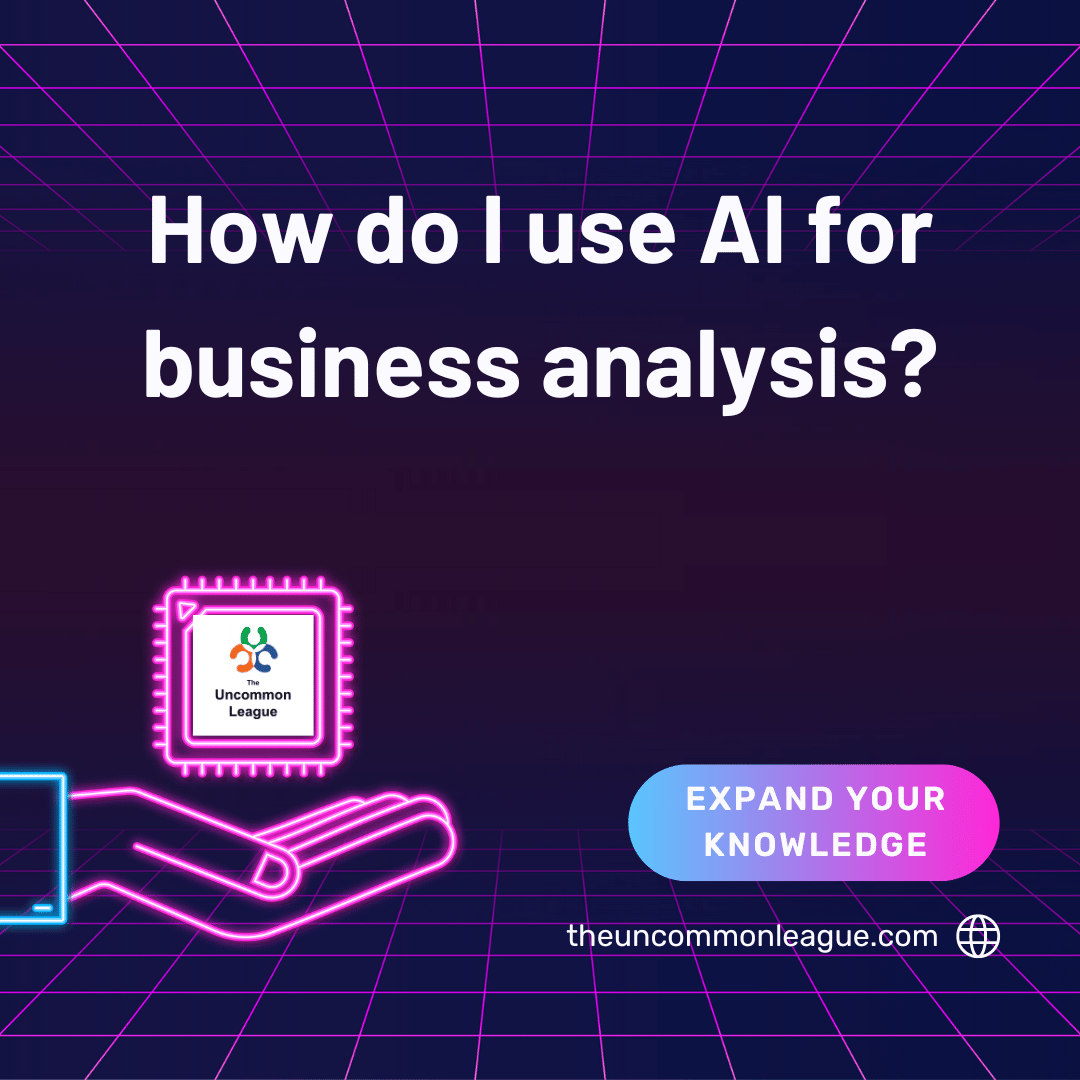How do I use AI for business analysis?
In the dynamic world of business, Artificial Intelligence (AI) stands as a beacon of transformation, offering unprecedented capabilities to decipher complex data, predict trends, and drive strategic decisions. The integration of AI into business analysis heralds a new era where data is not just a resource but a navigator guiding businesses through the tumultuous seas of the market. This article embarks on an explorative journey into the realm of AI for business analysis, highlighting current trends and introducing a toolkit that empowers business analysts to harness AI's potential fully.
Embracing the AI Revolution in Business Analysis
The advent of AI in business analysis is not just an evolution but a revolution. It transcends traditional data analysis methods, enabling businesses to not only interpret vast datasets but also predict future trends, automate decision-making processes, and personalize customer experiences. AI's prowess in pattern recognition, predictive analytics, and natural language processing (NLP) transforms the role of business analysts from data interpreters to strategic visionaries.
The AI-Powered Business Analyst: A New Paradigm
Predictive Analytics for Strategic Foresight: At the heart of AI-driven business analysis is predictive analytics. By leveraging machine learning algorithms, businesses can forecast future trends, customer behaviors, and market dynamics with remarkable accuracy. Tools like TensorFlow and PyTorch enable analysts to build and deploy predictive models that can, for instance, anticipate customer churn, forecast sales, or identify potential market opportunities.
NLP for Unstructured Data Insight: A significant portion of business data is unstructured, residing in emails, social media posts, customer reviews, and more. NLP, a subset of AI, is a game-changer in analyzing this data. It allows businesses to extract sentiments, preferences, and trends from textual data. Tools like IBM Watson and spaCy offer sophisticated NLP capabilities, turning unstructured data into structured insights.
Automated Business Intelligence for Real-time Decisions: The era of static reports is being eclipsed by dynamic, AI-powered business intelligence (BI) systems. Platforms like Tableau integrated with AI can provide real-time insights, interactive dashboards, and automated reporting, empowering decision-makers to act swiftly and confidently. These AI-enhanced BI tools can continuously analyze data streams, providing up-to-the-minute insights crucial for fast-paced business environments.
Customer Segmentation for Personalized Marketing: AI excels in dissecting customer data to identify distinct segments based on behaviors, preferences, and demographics. Tools like K-means clustering in the SciPy library can automate this segmentation, enabling businesses to tailor marketing strategies and products to specific customer groups, enhancing engagement and loyalty.
Current Trends Shaping AI in Business Analysis
Explainable AI (XAI): As AI models become more complex, there's a growing demand for transparency and understandability in AI decisions. XAI is emerging as a crucial trend, focusing on making AI decision-making processes clear and comprehensible, thereby fostering trust among stakeholders.
AI Ethics and Governance: With great power comes great responsibility. The integration of AI in business analysis brings to the fore ethical considerations concerning data privacy, bias, and decision-making. Businesses are increasingly establishing AI governance frameworks to ensure ethical, transparent, and fair use of AI technologies.
Augmented Analytics: This trend involves augmenting human intelligence with AI to create more intuitive, efficient, and collaborative analytics processes. Tools like Google's AutoML enable analysts with limited machine learning expertise to build and deploy models, democratizing AI across business functions.
Edge AI for Business Analysis: Edge AI involves processing data on the device itself, rather than sending it to the cloud or a centralized server. This trend is gaining traction in business analysis for its potential to provide real-time insights, enhance data security, and reduce latency, particularly in IoT (Internet of Things) applications.
Toolkit for AI-Driven Business Analysis
To navigate the AI-driven landscape of business analysis, here's an arsenal of tools at your disposal:
TensorFlow and PyTorch: These open-source libraries are powerhouses for building and deploying machine learning models, ideal for predictive analytics and deep learning applications.
IBM Watson: Offering a suite of AI services, IBM Watson excels in NLP, enabling businesses to analyze textual data for insights into customer sentiments, market trends, and more.
April 15 - 17, 2024 (3 Days)
9:00 am (Central) until 5:00pm (Central)
Online - Live Instructor
Tableau with AI Integration: Tableau stands out for its interactive data visualization capabilities. Integrated with AI, it offers dynamic insights, predictive analytics, and automated reporting.
SciPy for Customer Segmentation: Part of the Python ecosystem, SciPy is a library used for scientific and technical computing, perfect for tasks like customer segmentation and data optimization.
Google's AutoML: This tool is designed to make AI accessible to non-experts, allowing business analysts to build custom machine learning models without extensive coding, ideal for augmenting analytics with AI.
A Paradigm Shift
The integration of AI in business analysis is not merely an addition to the analyst's toolkit—it's a paradigm shift that redefines the very fabric of business decision-making. By leveraging predictive analytics, NLP, and automated BI, businesses can unlock insights that were once beyond reach, anticipate market shifts, and personalize customer interactions like never before. As we sail into this new era, the convergence of AI and business analysis promises not just enhanced efficiency but a renaissance of innovation, strategic foresight, and competitive agility.
In this journey, the role of the business analyst evolves, blending traditional analytical acumen with AI prowess. Embracing current trends like XAI, AI ethics, augmented analytics, and Edge AI will be pivotal in navigating this landscape responsibly and effectively. Armed with the right tools and a forward-looking mindset, business analysts are poised to lead their organizations into the future, harnessing the transformative power of AI to illuminate the path ahead.
Tags #businessanalysis #ai


